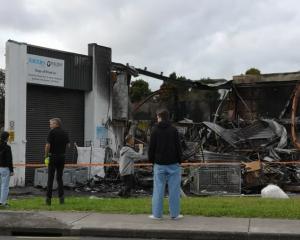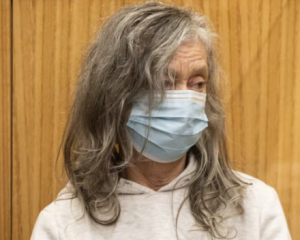
If there’s one thing Nelsonians value above all else, it appears to be sunshine, and they will rally en masse to protect it.
Residents claim the city’s reputation as New Zealand’s sunniest city is under threat by a council proposal to enable higher density housing by making it easier to build up.
Over the past week and a half, dozens have presented to the panel overseeing the hearing for Plan Change 29.
The council has amended its proposal to limit the extent that taller buildings would be allowed without a resource consent, but community concerns remain about literally being left in the dark.
Jonathan Chambers said the plan was “unsalvageable”.
“Direct sunlight is a critical natural resource for myself and many others in Nelson. Our existing rights must be protected.”
The winter sun is why Hamish Barker permanently moved to the city.
“Anywhere can be nice in the summer, but when it’s nice all year round, then that really makes a difference.”
Even former mayor Rachel Reese found herself back in the council chamber, speaking to sunlight’s importance to the region, despite trying to remove herself from council matters.
“It is so fundamental to what people value about living here.”
Locals feel left out
While Reese was in favour of intensification, she thought the council had got “too far ahead” of residents.
“They are genuinely upset, they are awake at night, this is causing them anguish.”

These neighbourhood plans were signalled in the region’s Future Development Strategy as a way to identify how to best plan for housing and business land in priority areas, but were left until after the plan change process rather than being developed prior.
Many residents mentioned feeling like their communities should have had more input into the proposed plan before its notification to the point where the independent panel chair, commissioner Greg Hill, described it as a “theme” of the hearing.
Submitter Robin Whalley said it was "a bit of a shambles".
“[Council] need to talk to us, why did no one come and talk to us?”
The need for neighbourhood plans was reinforced by William Samuels, former chair of the local branch of the New Zealand Institute of Architects, who said they would enable a more “granular” approach to the needs of individual communities.
Building a flourishing city
Samuels also thought there were too few qualitative controls to ensure an “attractive” urban environment rather than the extensive development of “ugly and unappealing” sausage flats.
“There is a difference between good intensification and bad intensification. At the moment, we feel that the plan change, as it is, does not do enough to differentiate between the two.”

But despite his concerns, Samuels was supportive of the intent of the plan change to reduce urban sprawl by encouraging intensification of housing.
Urban designer Timo Neubauer from thinktank NelsonTasman2050 agreed, saying that greenfield development was “sucking the lifeblood out of our city centre”.
Change is needed for development
Developers are eager to see the plan approved, saying the changes are necessary to get their projects off the ground.
Gareth Lawes from Trafalgar House Ltd said that the increased height limits in the proposed plan would “significantly improve” the viability of projects.
“Under the current restrictions, we're only achieve we're only basically able to achieve a less-than-15-per cent margin on projects and frankly it’s expensive.”
Roundhay Retirement Village owner Malcolm Turner said Plan Change 29 was “crucial” to his plan for a multi-storey complex that would enable greater care for village residents when their health deteriorates.
“There is a need for more accommodation for the elderly to a higher level of care, such as rest home hospitals, while staying in their own community.”
State Highway noise
A proposal to require acoustic insulation for new buildings or those which are substantially altered was also unpopular with submitters.

He added that with only 30 noise complaints over the last 8 years, noise from the highway wasn't a major concern for residents.
Jacinda Stevenson, chair of the Tāhunanui Business and Citizens Association, thought the rule had “no place” in the plan and would impact large parts of the suburb which is bisected by the highway.
The rule, coupled with the suburb not being slated for intensive development, would reinforce the historic pattern of underinvestment in Tāhunanui.
Council perspective
Nelson City Council is pushing the plan as a way to address housing supply and affordability issues, as well as to fulfil Government planning requirements.
Despite the pushback, the council’s urban design expert Cam Wallace said it was “critically important” to provide intensification opportunities across the city to enable genuine choice for residents.
Economic expert Lawrence McIlrath also said that Plan Change 29 could allow for a decrease in housing prices by 25 per cent by unlocking housing capacity.
His 30-year weighted price average estimates saw detached homes drop in price from $1.79 million to $1.35m, while attached homes would drop from $980,000 to $820,000.
He did, however, caution that demand for high-density housing was low and could be captured in just a few developments.
Noise expert Jon Styles said the acoustic insulation requirements aimed to reduce the adverse health effects of “chronic exposure” to transport noise, but acknowledged the cost would fall on the community.
Next steps
After the hearing concludes on Wednesday, it will pause until 17 September for a final day focusing on natural hazards.
The panel will then deliberate before eventually providing Nelson City Council with its recommendation on whether Plan Change 29 should be rejected, or adopted with or without amendments.
The council will have limited grounds to act against the recommendations of the panel.
- Local Democracy Reporting is local body journalism co-funded by RNZ and NZ On Air













